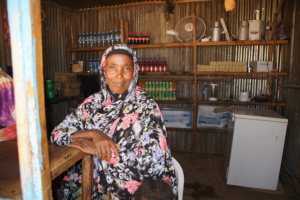Papua New Guinea is an island in the South Pacific located just north of Australia, with a population of around 7 million. It is a developing country, ranking 156 out of 187 countries on the UN Human Development Index.
Papua New Guinea suffers—like most developing nations—from high levels of poverty and corruption within the government due to vast oil and gas reserves.
But Papua New Guinea doesn’t simply have to deal with the normal problems of a developing country. Sadly, in recent years this island nation has become known for rampant and increasing violence against women.
It has been reported that 68 percent of PNG women suffer from violence. What is worse is that one in three women have reportedly been raped. As with most rape statistics, that number is often low, as many women who have been raped do not report it.
Violence against women in Papua New Guinea is not always of a sexual nature. Women are often accused of sorcery, and violence is used as retribution. In February 2013, there was a highly publicized case of a 20-year old woman accused of sorcery. As punishment, she was burned alive.
Domestic violence seems to be the most prevalent form. It is often the result of the male’s desire to assert authority over his female partner because he may perceive that she is acting insubordinate or lazy.
Amnesty International states that this type of violence “includes rape, being burnt with hot irons, broken bones and fractures, kicking and punching and cutting with bush knives.”
There have been some attempts by the government to deal with this issue. In April of last year, the 1971 Sorcery Act, which criminalized sorcery, was repealed.
In September 2013, the parliament in PNG passed the Family Protection Bill, which made domestic violence illegal.
However, many women still do not know of the existence of this law, and implementation has been difficult and not very far reaching. The same is true of the sorcery law, which is in the appeals process and does not change the pervasive cultural view of the existence of sorcery.
Women’s groups from within and outside PNG continue to try and spread awareness of this issue and work on programs that attempt to eradicate these grave human rights violations.
Statistics and research on this subject are hard to find though. Women’s rights groups have a difficult time funding further research because no raw data exists. Papua New Guinea is low on the international radar.
Awareness and further research on this issue is needed in order to help the women of Papua New Guinea escape this terrible cycle of violence.
– Eleni Marino
Sources: Child Fund, Amnesty, Human Rights Watch, Islands Business, Human Development Report, United Nations,
Photo: ABCNews

